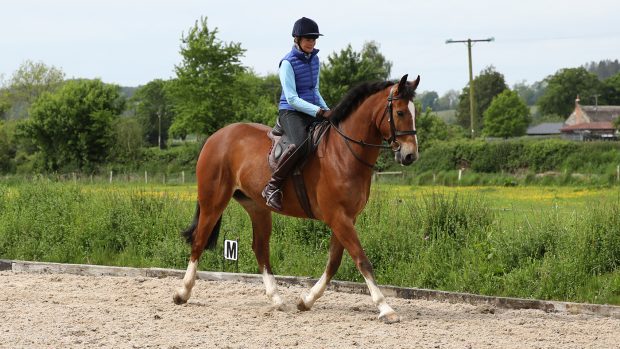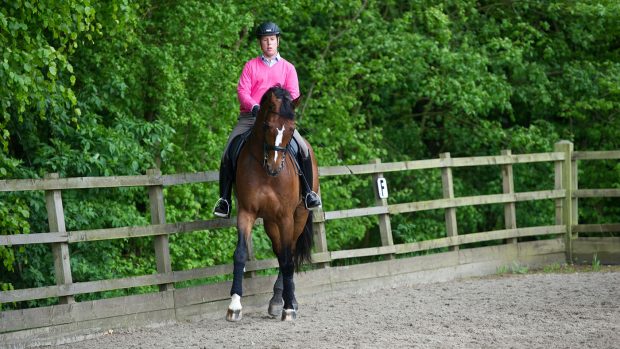Hayley is an international grand prix dressage rider who has represented Britain on countless occasions. She was a reserve for the Rio Olympics and, with Rubins Nite (pictured), was the 2017 British national dressage champion
Some horses naturally start off quite tense and benefit from exercises to encourage them to work over their backs and relax. For instance, as a young horse, Rubins Nite was fairly tight over the back. Instead of stretching, I would work onto the bit, doing lots of transitions to focus his attention on me.
Tackling the issue
1. Firstly, make sure that the horse is in front of your leg, accepting a light leg aid and responding instantly. This starts from the stretching phase: the horse should be stretching towards the contact, actively pushing from the hind legs, reaching out towards the hand and not falling behind the vertical.
2. Always aim for a light but consistent contact. Make sure the horse doesn’t drop behind the contact, which will make it impossible for him to use his back end.
A good exercise to encourage the horse to take the contact while stretching is to ride spiralling circles. Start on a 20-metre circle, then spiral down to a 12-metre circle, flexing him to the inside. Leg-yield back out and repeat. Keep the inside flexion throughout.
3. The horse needs to be relaxed and in balance so he does not rush. Some horses will need to start in a slower rhythm in order to be able to stretch and become softer over the back.
Once you pick him up in a competition frame, the horse still needs to be pushing from behind, remaining supple and soft. If he starts tensing and does not push forward, relax the contact and ride a circle.
4. Transition work is also useful. The transitions can be upwards and downwards as well as within the pace, making sure the horse doesn’t resist the contact and come up in front.
For a trot to walk transition, it can be a good idea to stay in a smaller trot until the horse relaxes, so he accepts that he needs to wait for you instead of tightening through the neck. Use your seat to make the transition and slow the trot down by rising more and more slowly until he walks. Aim to keep him forward through the transition.
5. For some horses, stretching over raised poles — either raised at one end and alternated, or straight across — is good to engage the horse’s core muscles, while also encouraging him to stretch over the back and maintain balance.
Continued below…

What is medium trot, and what are the benefits for your horse?

Subscribe to Horse & Hound magazine today – and enjoy unlimited website access all year round
Hayley’s out-of-the-saddle tips to give your horse the best chance of starting his training sessions supple and relaxed in his body:
- Turnout: “They’re horses, and it’s so good for them, both mentally and physically, to be able to keep moving.”
- Pre-riding exercises: “Before I get on any of my horses, I do carrot stretches in between the front legs, and then to the side, both ways: low down first and then higher up. I also run a finger under the belly to encourage them to lift their back. Ask your physio for tailored stretches that will benefit your horse.”
For all the latest equestrian news and reports, don’t miss Horse & Hound magazine, out every Thursday




